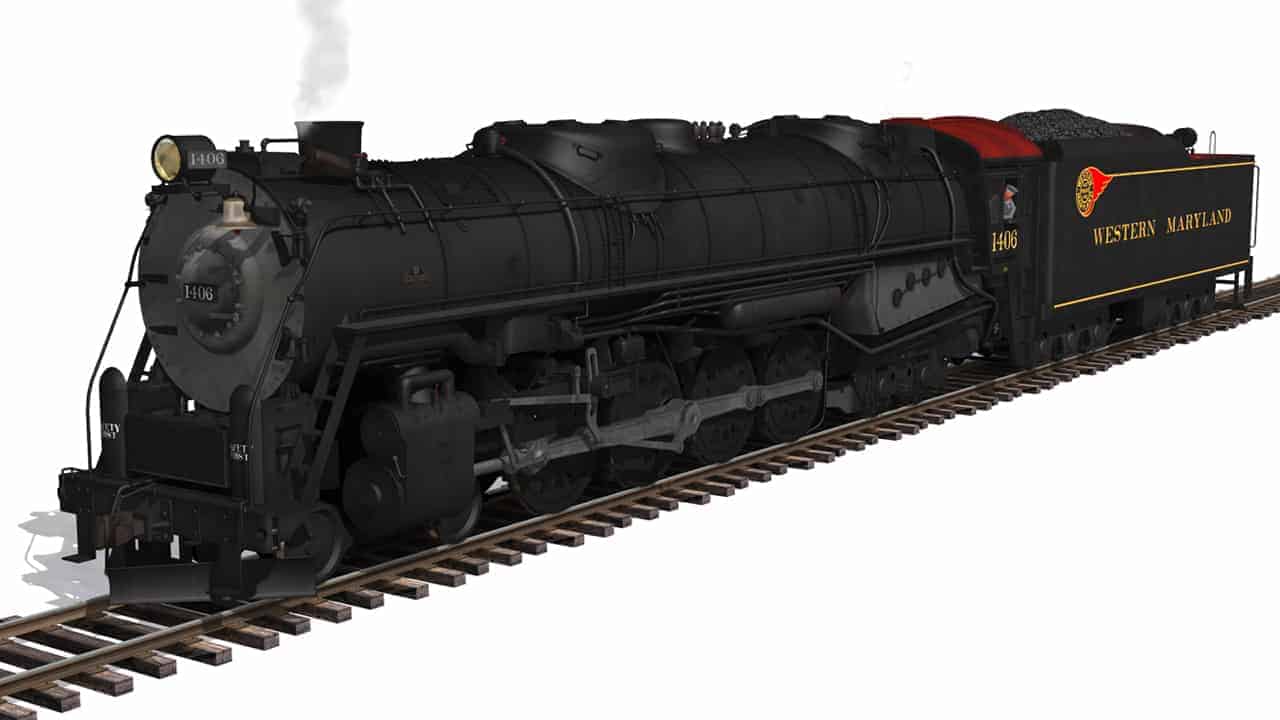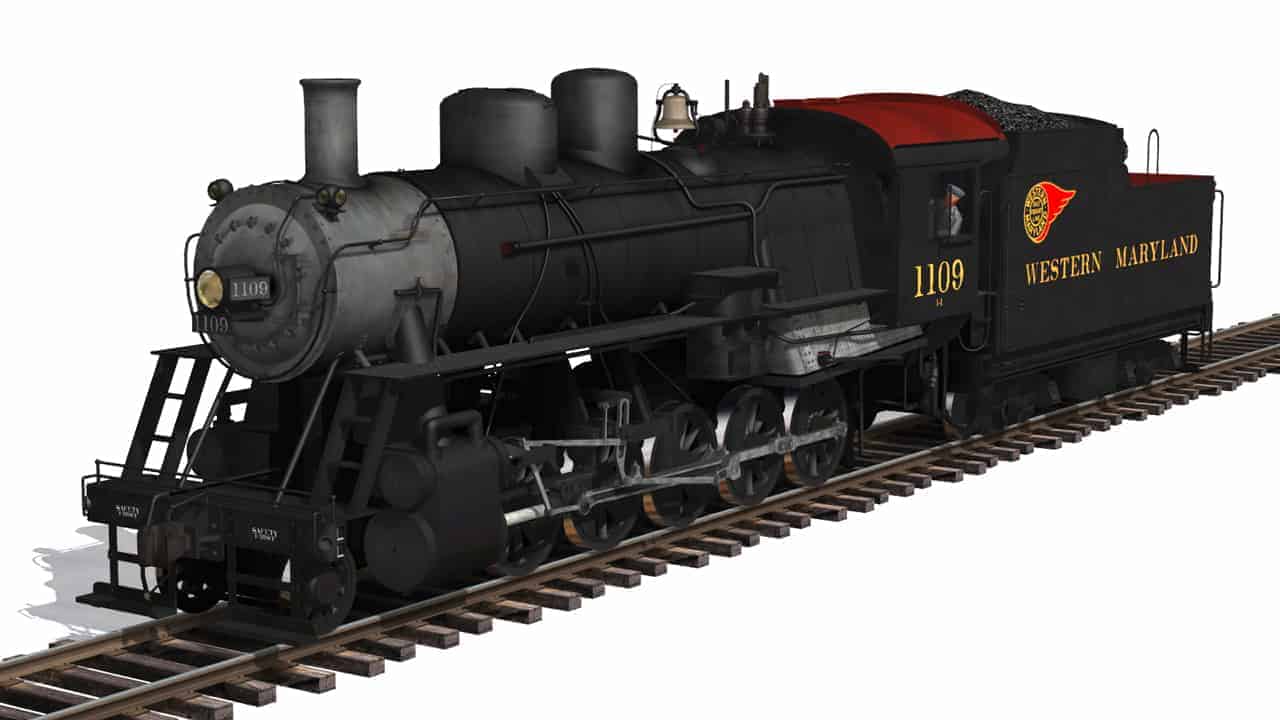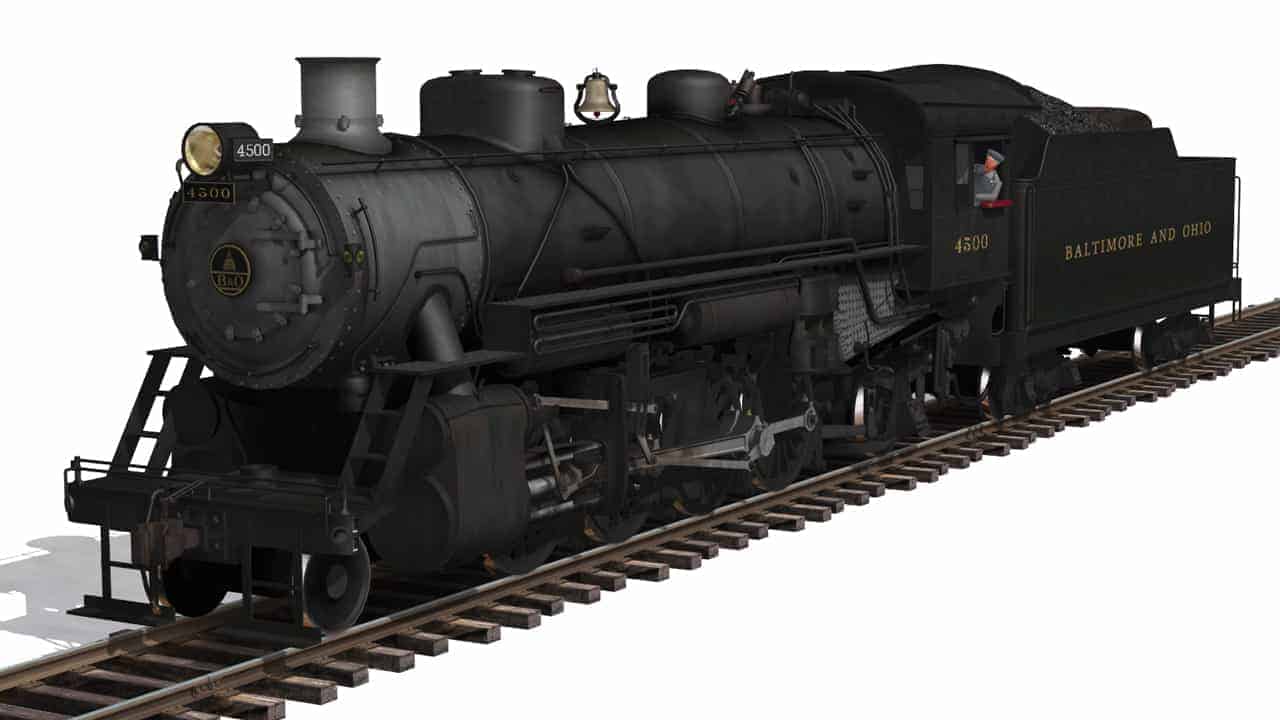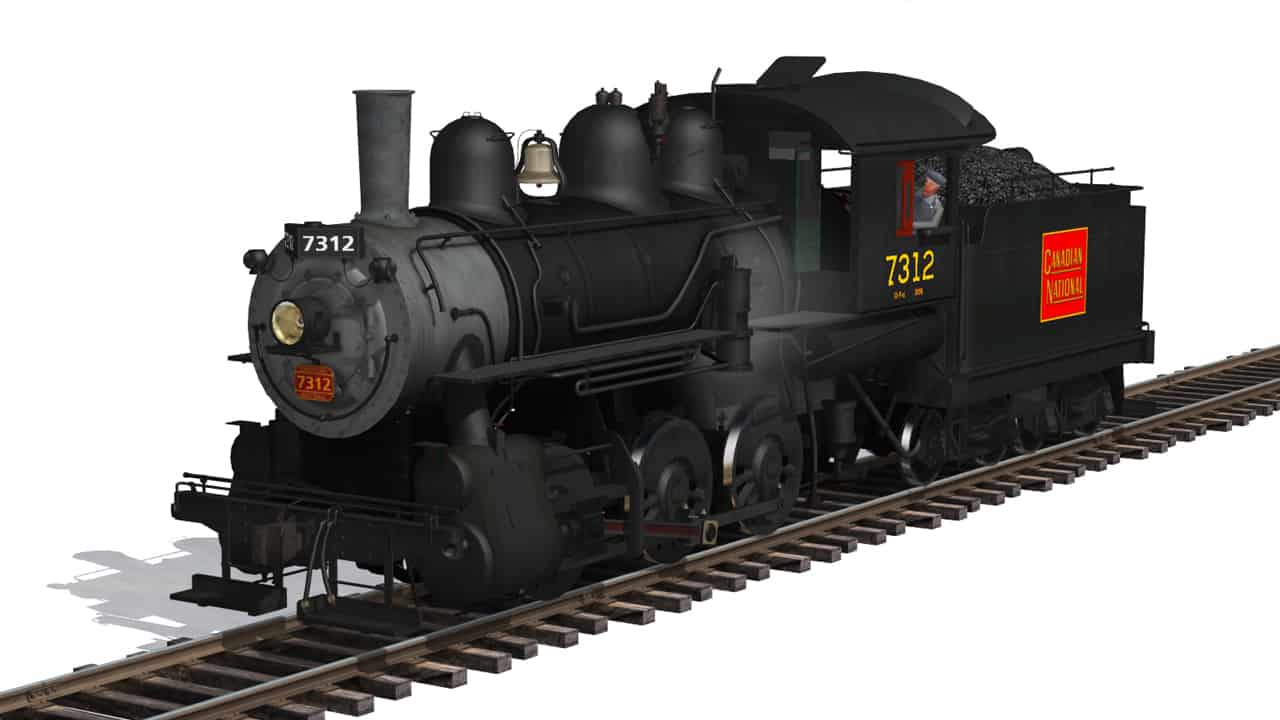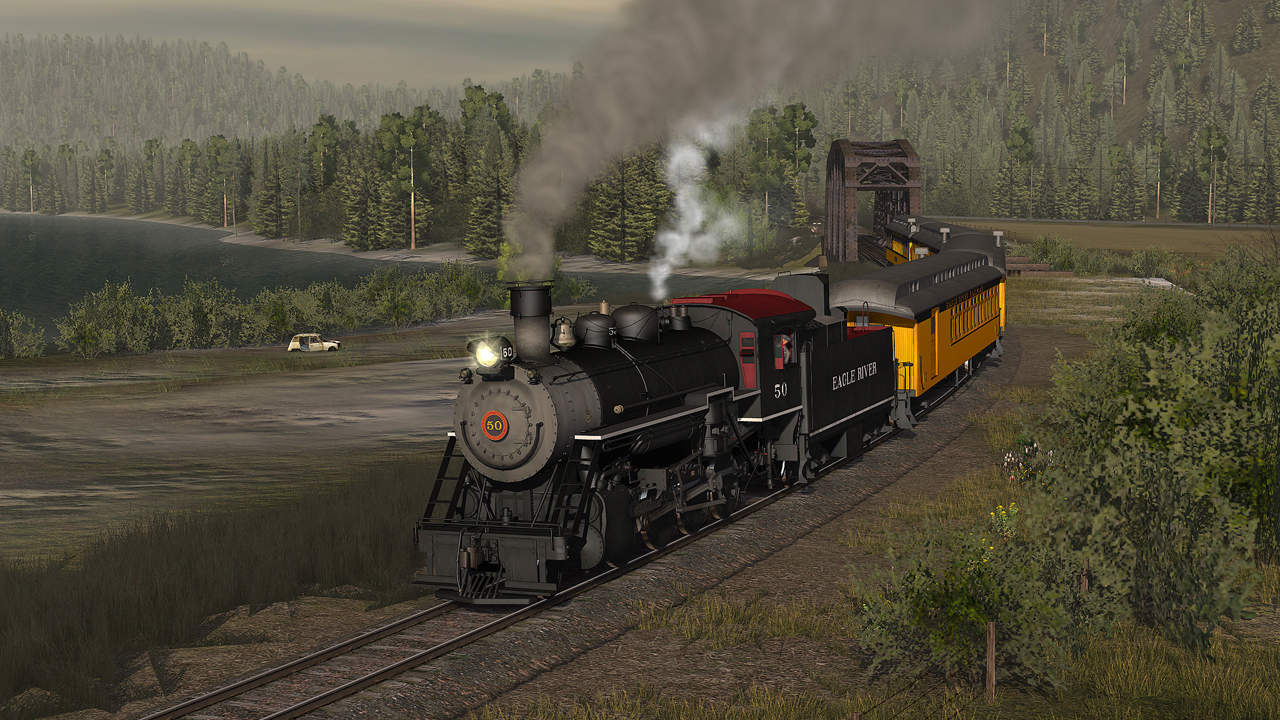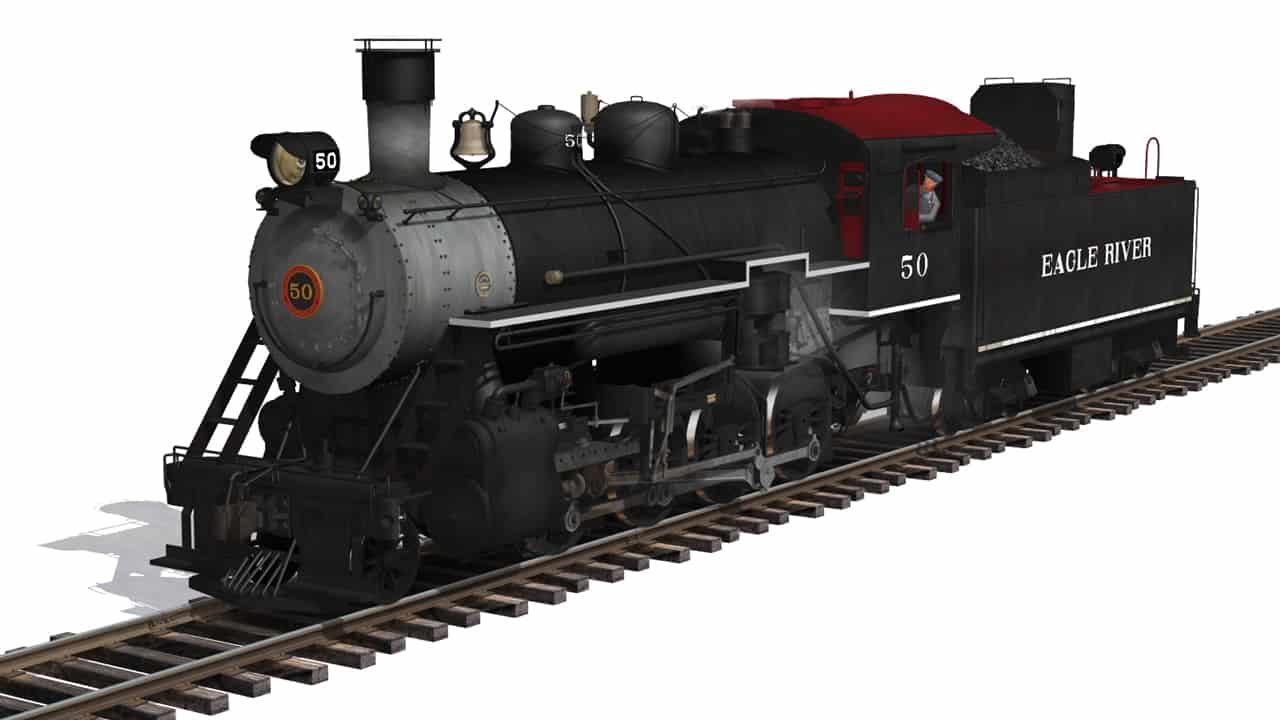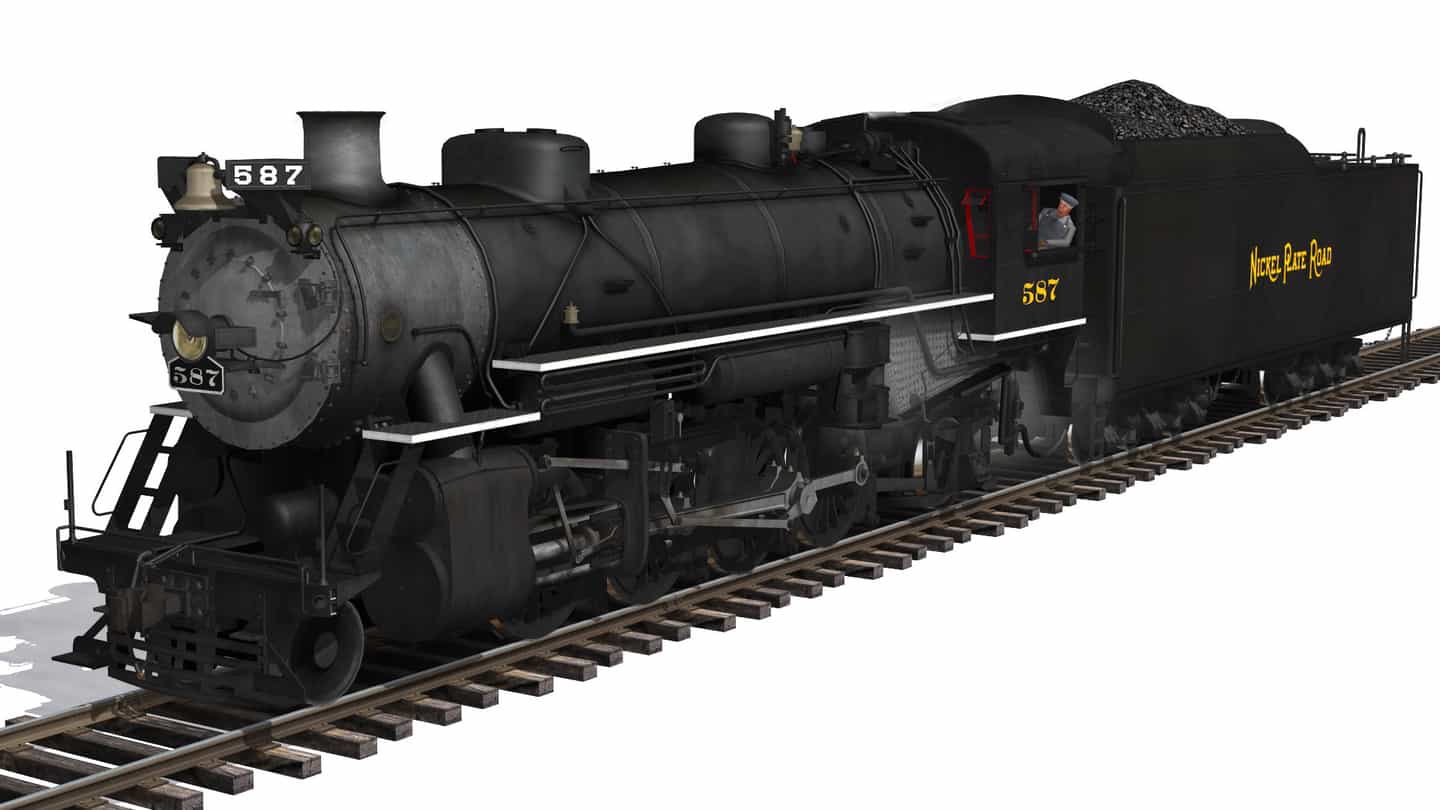The Western Maryland took delivery of (12) 4-8-4’s in 1947 from the Baldwin Locomotive Works. Rather than naming them “Northerns” like most railroads, the WM chose to name them Potomacs. They were classified as the J-1, and numbered from 1401-1412. These locomotives were massive! Their boilers were nearly 9ft in diameter! Saddled on (8) 69″ drivers, the Potomacs weighed in at 506,500 lbs, and produced 70,600 lbs of tractive effort when running at 255 boiler psi. At 45mph, the Potomacs head nearly the same performance as the even larger M-2 4-6-6-4 Challengers. They were very liked by the engine crews, mostly because of the enclosed all-weather cabs, and the (4) wheel trailing truck provided extra comfort. Timken roller bearings were fitted on all engine and tender axles and on the back end of the eccentric rod. All link motion pins used needle bearing and the drive wheels were of the Box Pox design. The trailing trucks were designed to accomodate a booster engine, but they were never added. On the 1.75% grade west out of Cumberland, MD, the Potomacs were limited 1180 tons unassisted. On level track, they were capable of handling upwards of 5500 tons. 8000 tons was the limit for downhill runs. The Potomacs ended up being the last steam locomotives the WM received new before dieselization began.
All of the Potomacs were retired in 1954, being stored in Hagerstown and Cumberland until 1957 when the equipement trusts ran out, resulting in their inevitable scrapping.
None of the (12) Potomacs were preserved.
WM J1 Potomac set includes: (2) Engines and (2) Tenders
